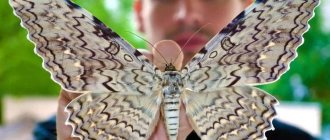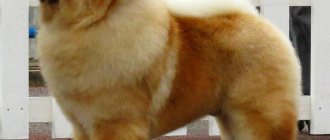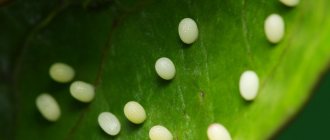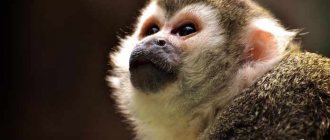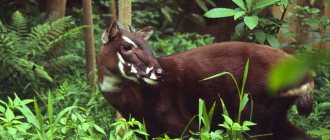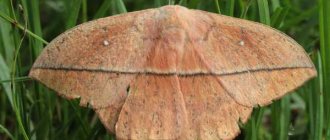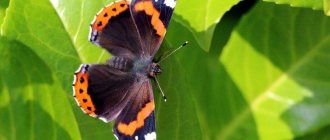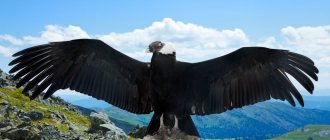Butterflies are perhaps the most beautiful creatures on the planet. Among the 160 thousand species of these insects there are huge and tiny, bright and modest, transparent and fluffy, like flowers plucked by the wind of different shapes and shades. In Japan, it is believed that a butterfly that accidentally flies into the house is a harbinger of happiness, because it is a symbol of the joy of life. Modern dream books promise wealth, love and good luck to those who see a butterfly in a dream.
There are clinics in Sweden where butterflies are used to treat stress. In India, China and some African countries, these insects are not only an object of admiration, but also a delicacy.
Scientists suggest that about 100 thousand species of lepidoptera remain unknown to science. Perhaps, somewhere on a distant tropical island there live such beauties as the human eye has never seen. But the variety of species studied is breathtaking. The most beautiful butterflies in the world are collected in our rating.
Peacock eye
The bright Peacock butterfly opens the top ten most beautiful insects. This is a small diurnal butterfly, its wingspan rarely reaches 6 cm. On a bright background, from red to brown, there are 4 bright spots resembling eyes. On the lower wings the “eyes” are black and blue, on the upper wings they are iridescent on a black background. The reverse side of the wings, gray-brown with veins, imitates a dry leaf. The color of an adult insect may change depending on the temperature conditions in which the pupa developed. The body of this butterfly is covered with brown down.
Peacock's eye can be found in central Eurasia on flowers, tree sap and fermented fruits. Representatives of this species live up to 9 months. They overwinter in folds of tree bark and cracks in outbuildings. During thaws they can wake up and fly out of hiding. The second time it is difficult for an adult insect to fall asleep.
Trogonoptera trojan
Trogonoptera trojana, male
Another beauty, occupying 8th place in our list of giants, is Trogonoptera trojana (lat. Trogonoptera trojana). A very rare butterfly that lives only on the island of Palawan (Philippines). The wingspan of this species reaches 17-19 centimeters. Males are smaller in size, but their color is brighter.
Greta Oto
In ninth place in the ranking of the most beautiful butterflies in the world is the unusual Greta Oto. Like the Peacock's Eye, it barely reaches 6 centimeters, and also prefers daylight hours. This is where the similarity between the rating neighbors ends.
Greta Oto's trump card is not lush beauty, but fragility and grace. She has a slender body and transparent wings without color scales, for which she received a second name - the Glass Butterfly. The wings have black veins and a brown-red border; on the upper wings there is a small white stripe. When the rays of light fall successfully, the transparent sections of the wings shimmer like a soap bubble.
The crystal beauty lives in the humid forests of the Amazon. The caterpillars feed only on the leaves of the poisonous cestrum bush. The caterpillar accumulates a toxin that is enough for the entire life of this butterfly. Adult Greta Oto feeds on the nectar of various flowers, but the supply of poison is enough to prevent insect eaters from touching her. The glass moth plays an important role in the ecosystem by pollinating plants. When migrating, butterflies of this species gather in groups and travel up to 20 kilometers per day.
Terror flying on wings
A representative of the sailboat family, Apollo , is very unpretentious in food, so it occupies vast territories from Europe to Siberian forests. His favorite terrain is pine clearings, where there is a lot of sunlight. He opens his wings towards the sun to collect the sun's rays.
But in addition to the sun's rays, they are also seen by natural enemies, for whom Apollo is food. To avoid this danger, they have developed a special coloring, which is characteristic of poisonous insects: on the upper side of their wings they have 4 bright red spots, warning the enemy of the danger and inedibility. If necessary, the butterfly suddenly descends to the ground and opens its wings, which from a height look like poisonous or stinging insects.
If the enemy is very brave or too hungry to react to such a coloring, then Apollo begins to actively rub his hind legs over his wings. There are special combs on the hind legs for this purpose, friction against which helps produce a rather loud hissing sound. This sound is very unpleasant and can scare away even the person who hears it.
For the ability to make sounds, which most of its relatives lack, Apollo falls into 10th place in the top parade.
Morpho Peleida
The next line in the list of the most beautiful butterflies in the world is Morpho Peleida. Her name means “beauty” in Greek. The wingspan of this diurnal butterfly is 10-12 cm. The bright blue color of the wings is framed by a black border with white specks. The underside of Morpho Peleida's wings is gray-brown with a thin light pattern of stripes and circles resembling eyes.
The main habitat of these beauties is Central America and the Caribbean islands. There they are bred on special farms. Green teardrop-shaped pupae are exported to many countries around the globe. The zigzag flight and rapid flapping of their wings make these butterflies look like flashes of blue lights. Predators do not risk hunting these blue flashes. But, even without being attacked by insectivores, Morpho Peleida does not live long, only 2-3 weeks.
Storage duration
Investing money in butterflies and especially rare ones and mutants is considered a profitable business by professionals. But its safety comes to the fore.
Famous designers, in the design of these insects, among other manipulations, cover them on the underside with special glue. Such additional manipulation makes it possible to preserve valuable specimens for decades and even centuries. If you do not take any action, the beautiful and charming butterfly will crumble into dust after a while.
Mandatory advice: do not place the butterfly in a frame in the open sun, as some species are not resistant to sunlight, and all the beauty of the velvet wings will fade.
Admiral
The Admiral butterfly received its name for its resemblance to admiral ribbons worn over the shoulder and stripes. On a black or brown background of velvety wings with a span of 5-6.5 cm, bright red-orange stripes stretch. A wide fiery border with black specks frames the hind wings. The forewings are bisected by orange lines. In addition, there are large white spots at the top of the front wings, and if you look closely, you can find shimmering blue spots along the edges of the wings. The Admiral's body and front legs are covered with thick hairs.
This butterfly is distinguished by its huge habitat: it can be found in Eurasia, North Africa, North America and on islands in different parts of the world. Some butterflies of this species fly from the middle zone to Africa for the winter. Those individuals that remained over the winter become even brighter after the spring awakening.
Jet planes
Not all butterflies circle as gracefully as if they were dancing a waltz. Some of them are capable of developing amazing speeds, which were conquered by man only when he moved to a car.
One species from the hawkmoth is capable of reaching a speed of 60 km/h during flight. In the animal world there are representatives that fly much faster, but in proportion to the small size of hawk moths, this speed is simply enormous. For example, the leader in flight speed in the world of birds - the peregrine falcon - in an hour can move a distance that is 12 thousand times the length of its body, and for the hawk moth this figure will be 25 thousand times.
When flying, the hawk moth makes 5 thousand beats per minute, which causes a low-frequency hum. It is not easy to see it at such speed, so it could easily be mistaken for a hummingbird.
For his incredible speed, Hawkmoth ends up in 7th place in the top parade.
Madagascar comet
The sixth place in the ranking of the most beautiful butterflies in the world is the Madagascar comet, also known as Saturnia Madagascar, also known as the Lunar moth. True to its name, this butterfly is found only in the tropical forests of Madagascar and is nocturnal. This species of lepidoptera belongs to the family of peacock-eyes, one of the largest butterflies on the planet.
The Moon Moth may not be the largest, but it is certainly the longest: its wingspan reaches 14-18 cm, and the hind wings are equipped with “tails” 16-20 cm long! True, these tails don’t last long: after several flights they fall off. And the overall lifespan of Saturnia is short, within 3-5 days. For such a short life, there are enough nutrients stored in the caterpillar stage, so nature did not provide the comet with the opportunity to feed: it does not have a mouth or digestive system.
Externally, thanks to its tails, this butterfly really resembles a comet. On each yellow wing there is a bright spot in the shape of an eye. In addition, the Madagascar Comet is decorated with a brown border, spots on the tops of the wings and wavy stripes.
Pets
When it comes to pets, cats, dogs, cows, goats come to mind, but not butterflies. And completely in vain: the silkworm another 3 thousand years BC. Due to the fact that this creature has lived for so many centuries in the vicinity of humans and does not have the need to independently obtain food, it has practically lost the ability to fly.
Adults are unremarkable and have discreet coloring. But the cocoons in which the caterpillars are packed consist of a long thread of silk. People can get up to 1.5 km of thread from one cocoon! Despite the fact that silkworms are bred on an industrial scale all over the world, this material does not decrease in price, since to obtain it it is necessary to undergo a complex technological process. For many centuries, silk remains a material with one of the highest characteristics; it gives a feeling of amazing comfort when worn and makes everyone feel like they are in a cozy cocoon.
Glory to Bhutan
Fifth place is occupied by the spectacular day butterfly Glory of Bhutan. Unlike other diurnal lepidoptera, it prefers cloudy and rainy days. The wingspan of the Glory of Bhutan is 10-12 cm. The background of the wings is dark brown, with light yellow wavy lines visible on it. The front wings are rounded, and the hind wings are equipped with several tails and a bright multi-colored spot that warns predators that this insect is poisonous.
Slava Bhutan knows how to hide its bright hind wings under more modest front wings, in this state it is almost impossible to see it on a tree trunk. She lives in the high mountain forests of Southeast Asia. Trade in this type of butterfly is prohibited, but collectors strive to obtain such a butterfly, at least illegally. For several days after its capture, the Glory of Bhutan exudes a sweet aroma.
Children of Heaven
People who climb in the Himalayas are dumbfounded by the fact that in the mountains at an altitude of 6 thousand meters you can still find butterflies of the genus Parnasius . Oxygen levels at this altitude are very low and every movement becomes incredibly difficult. To move further, climbers wear special equipment that protects them from lack of oxygen, scorching sun, low temperatures and strong winds.
But Parnasius doesn’t care: he can fly at such a height without being scorched by the sun and without suffering from an oxygen-free atmosphere. The fact is that his blood has transformed and can consume oxygen even in the lowest concentrations. Because of their amazing ability, these butterflies have been used in experiments conducted by astronauts in orbit.
Sailboat Maak
The Swallowtail Maak, or Blue Swallowtail, is the largest diurnal butterfly in Russia. This species is found on Sakhalin and the Amur region, as well as in Japan, Korea and China. The Blue Swallowtail is very popular among butterfly breeders; at home it can live up to three weeks.
The males are particularly beautiful: their black-veined wings shimmer in different shades of blue and green. Females are larger than males by about a centimeter, reaching 13.5 cm in span, but are more modest in color: most often they are brown in color, only the hind wings are equipped with an iridescent effect and spots. The shape of males and females is the same; an elegant tail clearly stands out on their curly hind wings. If the Maak's Swallowtail caterpillar is disturbed, it puts out 2 long horns with droplets of foul-smelling liquid.
Interior decoration
Not all collectors like modified butterflies. Most people are fond of beautiful and well-designed ones. Many people prefer everything to be aesthetically pleasing and flawless. Especially if butterflies are a decoration in a rich and luxuriously furnished house or apartment, that is, they are part of the interior.
And some are so addicted that one purchase leads to a second, a tenth, and then the count continues into hundreds or more. Sometimes they cover all the walls with butterflies and admire them.
Queen Alexandra's Birdwing
The top three is opened by Queen Alexandra's Birdwing, the largest of the daytime butterflies on the planet. The record female specimen has a span of 273 mm, but the color of the females is rather modest: a cream or light yellow pattern on a brown background. Collectors prefer males with narrow wings and an iridescent pattern of black and varying shades of blue and green. Males are also quite large, about 20 cm in span.
In 1951, a volcanic eruption destroyed much of the habitat of the Queen Alexandra Birdwing on the island of New Guinea, and the species has since been threatened with extinction. It is also very difficult to catch such a butterfly because it flies and feeds high in the treetops. The first specimen studied by science was shot from a gun.
Screamers
Butterflies are silent insects; we associate them with peace and tranquility. But the hawk moth Death's Head . It always causes bewilderment and fear among those who have not encountered it in the wild before, because these butterflies make sharp, loud sounds reminiscent of a squeak.
These insects are the largest in Europe: their wingspan is up to 140 mm. If we add to this the fact that hawk moths are active at night, then one can imagine the horror this insect brings to a person passing by.
The death's head loves to feast on honey, so it often penetrates hives and eats honey directly from the honeycomb. She is not afraid of bees, since the fibers on her body reliably protect her from bites.
In addition to the unpleasant squeak, this insect has a frightening pattern on its back that looks like a human skull. This was the reason that superstitious people blamed the death's head for the beginning of mass epidemics. In some settlements they still believe that scales falling into the eye from its body can cause complete blindness in a person.
Urania Madagascar
Another beauty from an African island is Urania Madagascar. This is a medium-sized diurnal butterfly, about 10 cm, in high mountain areas - about 7 cm. On the black background of the wings there are clusters of small scales, which under a microscope look like ribbons. The scales form rainbow stripes of yellow, green, blue and reddish tones. A light fringe runs along the edge of the figured hind wings. Urania's chest is covered with orange hairs.
The bright unusual coloring signals to predators that the insect is poisonous. This beauty feeds on the nectar of tea flowers, eucalyptus berries and mangoes. During the Victorian era, the wings of Urania Madagascar were used in jewelry.
Romeo and Juliet
The real Romeo and Juliet of the butterfly world are the males and females of the night peacock eye .
Before mating, females produce a special odorous substance, the release of which signals that the insect is looking for love. Such a small amount of these pheromones is released from special glands that scientists were able to examine it only with the help of magnifying technology. But for a male peacock's eye, it is enough to smell only one molecule of this pheromone to recognize the call of a female. The males’ sense of smell is so acute that they can distinguish this smell 12 km from their chosen one.
Scientists were even more surprised by the fact that males do not react to every representative of their species, but only to some. Why this happens and what the mystery of such pickiness lies in is not yet known. Maybe it’s the molecular composition of the secretion being produced, or maybe it’s the fact that you can’t order your heart.
The night peacock eye is included in the top 10 because it is able to feel and appreciate its chosen one from a great distance.
Atlas
Atlas is considered the most beautiful butterfly in the world. For its regal colors and nocturnal lifestyle, it received a second name - Prince of Darkness. Atlas lives in the warm, humid forests of Southeast Asia. In India, this species is bred for silk, which is different from the fibers of the silkworm. In Taiwan, empty cocoons of the Prince of Darkness are worn as a purse.
In males, the hind wings are much smaller than the front ones, and in females they are almost identical, so the entire silhouette of the male resembles a triangle, while the female is more like a square. Atlas is truly a giant butterfly: its wingspan reaches 24 cm, its cocoons are 11 cm, and its eggs are up to 3 cm in diameter, which is slightly smaller than quail eggs! Atlas's wings have an intricate pattern of different shades of red and brown.
Females prefer a sedentary lifestyle, while males fly masterfully and strive to constantly move in gusts of wind. This makes it easier for them to pick up the female’s pheromones, which they sense at a distance of 3 km. Adult Atlas peacock-eyes do not eat anything; for their ten-day life, the reserves accumulated in the caterpillar stage are sufficient.
Some of the recognized beauties of the butterfly world can be seen in nature or at exhibitions. Endangered species are found only in the richest collections; finding them in their natural habitat is rare, almost impossible luck. Some species are under protection not so much because of the threat of extinction, but because of their extraordinary beauty.
Animals Nature
Other butterflies of the Red Book
Moltrecht ribbon
(
Catocala moltrechti
)
Lucina
(
Hamearis lucina
)
Mongolian bear
(
Palearctia mongolica
)
Solitary bear
(
Camptoloma interiorata
)
Mimeusemia is similar
(
Mimeusemia persimilis
)
Mnemosyne
(
Parnassius mnemosyne
)
Mother of pearl zenobia
(
Argynnis zenobia
)
Shokiya is exceptional
(
Seokia eximia
)
Sericin Montela
(
Sericinus montela
)
Sphecodina caudate
(
Sphecodina caudata
)
Raphael's tail
(
Coreana raphaelis
)
Wild mulberry silkworm
(Bombyx mandarina)
Erebia Kindermann
(
Erebia kindermanni
)
